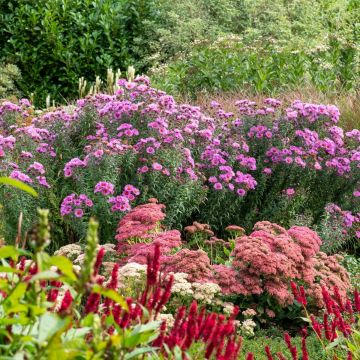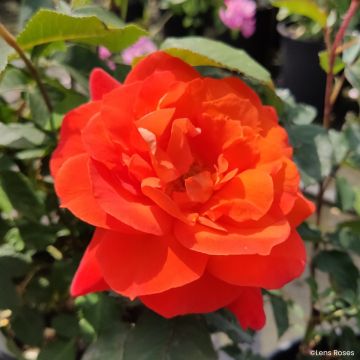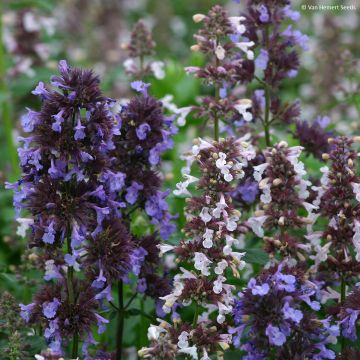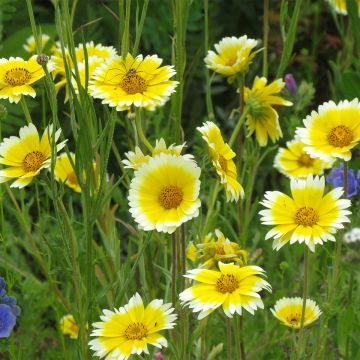

Dierama T&M Species Mixed
Dierama T&M Species Mixed
Dierama T&M Species Mixed
Fairy's fishing rods, Fairy wand flower, Wedding bells, Angel's fishing rods, Hairbells
Seeds sown but haven't germinated.
Christian B., 29/04/2017
Special offer!
Receive a €20 voucher for any order over €90 (excluding delivery costs, credit notes, and plastic-free options)!
1- Add your favorite plants to your cart.
2- Once you have reached €90, confirm your order (you can even choose the delivery date!).
3- As soon as your order is shipped, you will receive an email containing your voucher code, valid for 3 months (90 days).
Your voucher is unique and can only be used once, for any order with a minimum value of €20, excluding delivery costs.
Can be combined with other current offers, non-divisible and non-refundable.
Why not try an alternative variety in stock?
View all →This plant carries a 6 months recovery warranty
More information
We guarantee the quality of our plants for a full growing cycle, and will replace at our expense any plant that fails to recover under normal climatic and planting conditions.
Would this plant suit my garden?
Set up your Plantfit profile →
Description
This collection of Dierama T&M Species Mixed, poetically called angel's fishing rod, brings together different species with varied and infinitely delicate flowering. Forming clumps of ribbon-like foliage, these evergreen perennials bloom in summer with long gracefully arching inflorescences adorned with small pale or vibrant pink, mauve or violet bell-shaped flowers, carried on aerial stems. These plants are perfect at the edge of water features or in borders with moist soil. Best suited to mild climates or attentive gardeners, they thrive in sun or partial shade, in deep, moist, rich, well-drained soil.
The genus Dierama comprises various species belonging to the Iridaceae family. They are all native to the valleys of tropical and southern Africa (Ethiopia, Kenya, Uganda, Congo, Tanzania, Malawi, Zambia, Zimbabwe, Mozambique, South Africa, and Lesotho). T&M Species Mixed brings together plants that flower in a wide range of colours. This mixture produces plants with an upright tufted habit and tall, erect, strap-like leaves, measuring 50 to 60cm (20 to 24in) in height, with a spread of 30 to 40cm (12 to 16in), depending on the climate and soil. The foliage is evergreen, and the plants can tolerate temperatures down to around -7°C (19.4°F). The nectar-rich flowering period occurs in summer, from June to August. Tall, slender, flexible stems emerge from the foliage, carrying long branched spikes adorned with small bell-shaped flowers that gracefully bend. The flowers can be pale-pink, brighter pink, red, mauve, carmine or violet, depending on the plants, and they open one after the other on the spikes. The flowering is followed by the formation of small oval capsules containing numerous brown, hard seeds that require cold temperatures to break dormancy. Dierama is a cormous plant, with a flattened underground storage organ that appears in a chain, covered with a fibrous tunic. Plants grown from seed take 5 to 7 years to flower, so it is best to avoid moving them as they do not tolerate transplanting well.
Plant them in constantly moist, even damp, but well-drained soil to ensure their survival in winter. They will thrive alongside astilbes, vernonias, meadowsweets, and Ethiopian arums. They are very graceful plants but a little temperamental. Therefore, choose a sunny and sheltered location that is cool in summer and dry in winter. They are perfect for swaying in the breeze in gardens with the appropriate climate, in borders, mixed borders, flower beds, gravel gardens paired with grasses, near water features, or simply in pots.
Flowering
Foliage
Plant habit
Botanical data
Dierama
T&M Species Mixed
Iridaceae
Fairy's fishing rods, Fairy wand flower, Wedding bells, Angel's fishing rods, Hairbells
South Africa
Other Thompson and Morgan seeds
View all →Planting and care
Sow Dierama seeds from February to June or September-October, at 16 to 18°C (60.8 to 64.4°F), in special sowing compost.
Sow on the surface of the compost, barely burying the seeds. Keep the soil moist but not waterlogged. Do not exclude light. Enclose the sowings in a sealed polyethylene bag. Germination usually takes 1 to 6 months.
Transplant the young plants when they are large enough to be moved, and place them in cooler conditions, such as a closed cold frame. The young plants should spend the winter under a cold frame. Plant out in spring, after all risk of frost has passed.
Respect a spacing of 30 to 60cm (12 to 24in) between plants. Choose a sunny exposure, and deep, fertile, light and moist but well-drained soil.
Specific research area:
Water, if necessary, during the growing season. In winter, it is essential that the soil is not waterlogged. Dierama is sensitive to limestone. If grown in a pot, choose a rather acidic substrate, mixing ericaceous soil, compost and loam. Fertiliser application in spring is beneficial to support flowering.
Sowing period
Intended location
Planting & care advice
-
, onOrder confirmed
Reply from on Promesse de fleurs
Haven't found what you were looking for?
Hardiness is the lowest winter temperature a plant can endure without suffering serious damage or even dying. However, hardiness is affected by location (a sheltered area, such as a patio), protection (winter cover) and soil type (hardiness is improved by well-drained soil).

Photo Sharing Terms & Conditions
In order to encourage gardeners to interact and share their experiences, Promesse de fleurs offers various media enabling content to be uploaded onto its Site - in particular via the ‘Photo sharing’ module.
The User agrees to refrain from:
- Posting any content that is illegal, prejudicial, insulting, racist, inciteful to hatred, revisionist, contrary to public decency, that infringes on privacy or on the privacy rights of third parties, in particular the publicity rights of persons and goods, intellectual property rights, or the right to privacy.
- Submitting content on behalf of a third party;
- Impersonate the identity of a third party and/or publish any personal information about a third party;
In general, the User undertakes to refrain from any unethical behaviour.
All Content (in particular text, comments, files, images, photos, videos, creative works, etc.), which may be subject to property or intellectual property rights, image or other private rights, shall remain the property of the User, subject to the limited rights granted by the terms of the licence granted by Promesse de fleurs as stated below. Users are at liberty to publish or not to publish such Content on the Site, notably via the ‘Photo Sharing’ facility, and accept that this Content shall be made public and freely accessible, notably on the Internet.
Users further acknowledge, undertake to have ,and guarantee that they hold all necessary rights and permissions to publish such material on the Site, in particular with regard to the legislation in force pertaining to any privacy, property, intellectual property, image, or contractual rights, or rights of any other nature. By publishing such Content on the Site, Users acknowledge accepting full liability as publishers of the Content within the meaning of the law, and grant Promesse de fleurs, free of charge, an inclusive, worldwide licence for the said Content for the entire duration of its publication, including all reproduction, representation, up/downloading, displaying, performing, transmission, and storage rights.
Users also grant permission for their name to be linked to the Content and accept that this link may not always be made available.
By engaging in posting material, Users consent to their Content becoming automatically accessible on the Internet, in particular on other sites and/or blogs and/or web pages of the Promesse de fleurs site, including in particular social pages and the Promesse de fleurs catalogue.
Users may secure the removal of entrusted content free of charge by issuing a simple request via our contact form.
The flowering period indicated on our website applies to countries and regions located in USDA zone 8 (France, the United Kingdom, Ireland, the Netherlands, etc.)
It will vary according to where you live:
- In zones 9 to 10 (Italy, Spain, Greece, etc.), flowering will occur about 2 to 4 weeks earlier.
- In zones 6 to 7 (Germany, Poland, Slovenia, and lower mountainous regions), flowering will be delayed by 2 to 3 weeks.
- In zone 5 (Central Europe, Scandinavia), blooming will be delayed by 3 to 5 weeks.
In temperate climates, pruning of spring-flowering shrubs (forsythia, spireas, etc.) should be done just after flowering.
Pruning of summer-flowering shrubs (Indian Lilac, Perovskia, etc.) can be done in winter or spring.
In cold regions as well as with frost-sensitive plants, avoid pruning too early when severe frosts may still occur.
The planting period indicated on our website applies to countries and regions located in USDA zone 8 (France, United Kingdom, Ireland, Netherlands).
It will vary according to where you live:
- In Mediterranean zones (Marseille, Madrid, Milan, etc.), autumn and winter are the best planting periods.
- In continental zones (Strasbourg, Munich, Vienna, etc.), delay planting by 2 to 3 weeks in spring and bring it forward by 2 to 4 weeks in autumn.
- In mountainous regions (the Alps, Pyrenees, Carpathians, etc.), it is best to plant in late spring (May-June) or late summer (August-September).
The harvesting period indicated on our website applies to countries and regions in USDA zone 8 (France, England, Ireland, the Netherlands).
In colder areas (Scandinavia, Poland, Austria...) fruit and vegetable harvests are likely to be delayed by 3-4 weeks.
In warmer areas (Italy, Spain, Greece, etc.), harvesting will probably take place earlier, depending on weather conditions.
The sowing periods indicated on our website apply to countries and regions within USDA Zone 8 (France, UK, Ireland, Netherlands).
In colder areas (Scandinavia, Poland, Austria...), delay any outdoor sowing by 3-4 weeks, or sow under glass.
In warmer climes (Italy, Spain, Greece, etc.), bring outdoor sowing forward by a few weeks.






























































